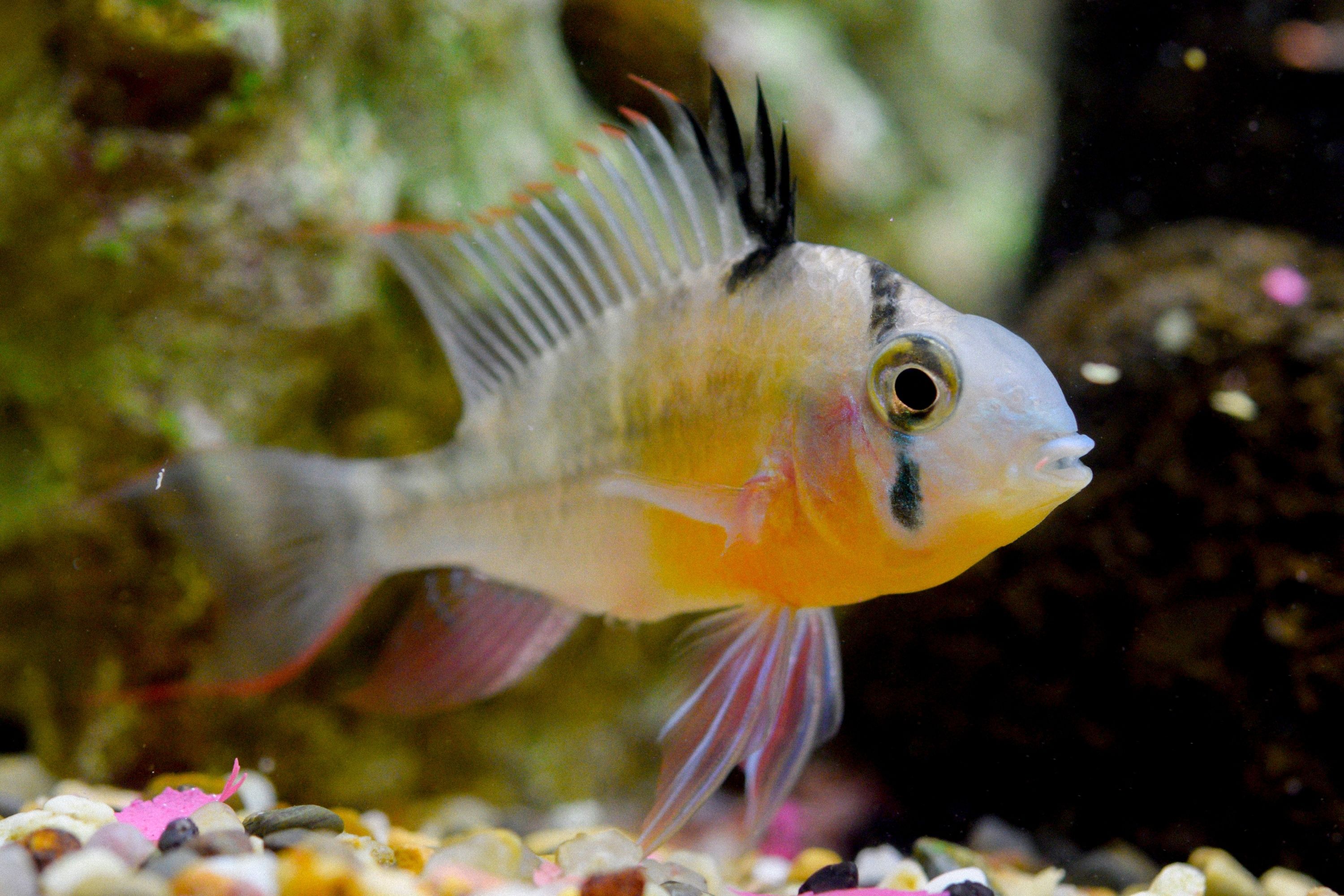Bolivian ram
(Mikrogeophagus altispinosus)

Description
Mikrogeophagus altispinosus is a species of fish endemic to the Amazon River basin in Brazil and Bolivia. The species is part of the family Cichlidae and subfamily Geophaginae. It is a popular aquarium fish, traded under the common names Bolivian butterfly, Bolivian ram, Bolivian ram cichlid, and ruby crown cichlid. The species occurs in the soft, acidic, warm waters of the Mamoré and Guaporé River drainages in Bolivia and Brazil. Whether one morph of M. altispinosus, known to aquarium hobbyists as Mikrogeophagus sp. "Zweifleck/Two-patch", found in the upper Rio Guaporé in Brazil is a different species remains unclear. The type locality is the Rio Mamoré at San Joaquin (Beni Province, Bolivia). In its natural habitat is permanent freshwater streams and pools. The species is similar in profile to the larger geophagine cichlids. Maximum size is about 8 cm (3.1 in). The head and front half of the body is yellow, fading to olive-grey at the rear. A vertical black band runs across the eye, and six faint transverse stripes occur along the body; the third stripe is dark at its centre. The first few rays of the dorsal fin are black, and both the dorsal and caudal fin are edged in a pinkish red. The anal and pelvic fins are the same shade of red throughout with bright blue rays and dots. The species displays only limited sexual dimorphism, mature males being slightly larger and in some cases showing longer extensions on both the caudal fin and the posterior of the dorsal fin. Omnivorous, this fish sifts the substrate for plant material and small organisms. It is capable of feeding in midwater or on the surface. Bolivian rams are biparental, open-spawning cichlids. Limited data are available on reproduction in the wild; in captivity, though, courtship is known to involve various body movements including head shaking, quivering, and preparation of spawning sites, including shallow pits. These behaviours are mainly undertaken by the male and in aquaria are known to last around 48 hours. After courtship, the female deposits some 100-200 ovoid, brownish-coloured eggs on the chosen surface, normally a flattened stone, but occasionally a leaf. The eggs are laid in lines; when the female has laid one line, the male passes over it and fertilises the eggs; the female then continues on to the next line and so on until egg laying is complete. In aquariums at 27 °C (80 °F), eggs take about 60 hours to hatch.
Taxonomic tree:







